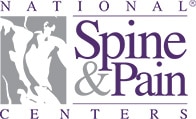
National Spine & Pain Centers
11921 Rockville Pike
Suite #505
Rockville, MD 20852

More Pain Management & Rehabilitation Articles
Minimizing Risk Of Opioid Overdose
Why did my provider prescribe naloxone? Just Because I take an opioid does not mean I'm an addict. You are absolutely correct. If your provider felt that you were an addict he would not prescribe an opioid. Think of naloxone (Narcan, Evzio), as someone with a severe allergy would think of an Epi-Pen. If you are allergic to bees you don't stop going outdoors, you simply prepare for the possibility that experiencing the outdoors could lead to harm. As a patient taking an opioid, you are at higher risk for a dangerous respiratory event, and, naloxone is meant to provide a means of rescue should you experience opioid induced respiratory depression.
What is opioid induced respiratory depression? Opioid medications act on areas in the brain to decrease your subconscious drive to breath. When taken in large quantities, such as an overdose, they can lead to extreme sedation, unconsciousness, severely slowed breathing, and death. Unfortunately, even when taken as prescribed, opioids may affect your breathing. This is particularly true when taken in higher doses, and when you have other medical conditions that may affect your breathing, such as COPD, asthma, sleep apnea, or a respiratory infection. Also, alcohol consumption and use of other sedating medications increase your risk. Medications called benzodiazepines (Valium, Xanax, Ativan, etc.) are of particular concern and, if possible, should be avoided when taking opioids.
What can I do to reduce my risk? A wide array of treatments and non-opioid medications are available that may help minimize or eliminate the need for opioids. These options may provide superior relief both short and long-term vs. opioids, and should be utilized when possible. If opioids are deemed necessary, make sure that your health care provider is aware of all your medications and health conditions. Together you can formulate a plan to minimize your risk for a respiratory event. Make sure that you are following your providers' directions for use of all your medications as well as treatment of other conditions that increase your risk. Additionally, if your provider prescribes naloxone have it filled and make sure both you and those close to you understand when and how to utilize. Your prescriber and pharmacist should educate you regarding appropriate use, and make sure to ask questions if you don't fully understand. Knowing how to recognize signs and symptoms of respiratory depression are vital. Early recognition is key and can be the difference between you taking action, or hoping that someone around you can and will.
How do I identify an opioid induced respiratory event? The most common early sign is sedation. If you feel that you are experiencing excessive or increasing sedation, avoid taking additional opioid medication and call your provider or 911 for help. It is important that those close to you recognize more advanced signs and symptoms in the event that you are incapacitated. The World Health Organization identified the three following signs, known as the opioid overdose triad, as key factors in identifying an opioid overdose
Slowed breathing
Pinpoint pupils
Unconsciousness
Additional signs and symptoms include unresponsiveness to stimuli, awake but unable to talk, pale or clammy face, vomiting, blue fingernails/lips, slowed pulse, limp body and choking or snoring like gurgling noises.
Other Articles You May Find of Interest...
- How to Promote Bone Fracture Healing? Tips for Faster Healing
- Managing Chronic Back and Neck Pain
- Pervasiveness Of Pain
- Effective Solutions for Lower Back Arthritis: Medial Branch Blocks and Radiofrequency Ablation
- Spinal Compression Fracture Treatment Options
- Hiatal Hernia: A Common Cause For Heartburn
- Can Electrical Stimulation Help My Pain?

















